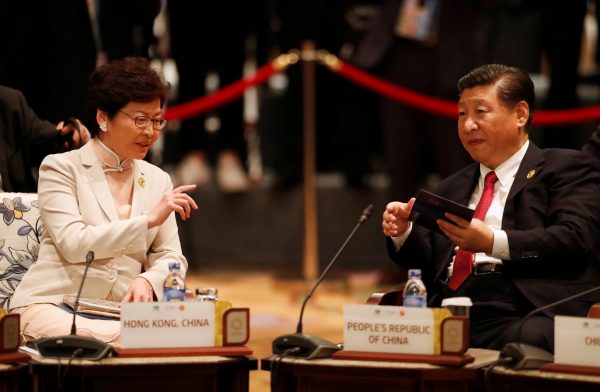On the surface, Hong Kong appears to be the biggest winner of the trade deal. Given that ASEAN is Hong Kong’s second-largest trading partner in terms of merchandise trade and fourth-largest partner in terms of service trade, AHKFTA is likely to help the city boost its exports by removing trade tariffs and guaranteeing equal national treatment from ASEAN. In return, Hong Kong (which is well known for its practice of minimum trade restrictions) need not revise much of its trade policy to fulfil its obligations as stipulated in the deal.
The ASEAN–Hong Kong Investment Agreement, which complements AHKFTA, also guarantees security protection and compensation in case of war or domestic emergency. Considering the track record of political instability in some ASEAN states, these agreements are essential for some Hong Kong manufacturers to be confident when investing in ASEAN nations.
That said, the economic gains should not be overstated. Hong Kong’s position became unfavourable when the ASEAN–China Free Trade Area (ACFTA) came into effect in 2010. Singapore benefitted immensely from Hong Kong’s exclusion from ACFTA by taking up Hong Kong’s traditional role of being the bridge between China and the rest of Asia. By the time AHKFTA comes into force in 2019, even if Hong Kong acquires the same privileges that Singapore did in 2010, there is little scope for the city to recover these losses.
Trade tariffs between Hong Kong and ASEAN nations will be lifted in accordance with the AHKFTA schedule of each member state, so Hong Kong will not reap many immediate trade benefits when the agreement comes into force in 2019. For instance, it will remain costly for Hong Kong businesses to enter into Cambodia, Laos and Myanmar until they eradicate their trade hurdles.
There is also a mismatch between the trade preferences of both sides. Electrical machinery, nuclear reactors, mechanical appliances and mineral fuels top the import list of ASEAN as a bloc. Except for electrical machinery (which is the principal item of Hong Kong’s re-exports), Hong Kong is not good at exporting what its Southeast Asian counterparts need the most.
Why then should Asia bother to pay attention to this agreement at all?
First, the free trade agreement symbolises Hong Kong’s successful reintegration into the Asia Pacific region after the global financial crisis. Since 1997, Hong Kong’s chief executives have paid more visits to Western nations than to Hong Kong’s immediate neighbours in Asia. Indeed, Hong Kong signed trade agreements with New Zealand, Chile and the European Free Trade Association before it signed its agreement with ASEAN. Hong Kong only opened its second trade office in ASEAN (in Jakarta) in July 2017, compared to the three offices it has in each of Europe and North America.
AHKFTA is likely to catalyse Hong Kong’s reintegration into the thriving region. Hong Kong has already announced its intention to set up a third ASEAN trade office in Thailand to ‘boost its links with ASEAN’. Breaking with the custom of visiting the well-developed ASEAN members, current Chief Executive Carrie Lam visited Myanmar (one of the least developed ASEAN member states) two months after coming to power.
Secondly, AHKFTA may revitalise the city’s long-dormant campaign to promote its ‘Asia’s world city’ status in the international arena. The pursuit of such an internationalist identity lost momentum gradually, partly because of the influx of opportunities that originated from Hong Kong’s realigning itself with mainland China’s provincial development initiatives. The ‘Asia’s world city’ descriptor later gave way to ‘super-connector between China and the world’, a phrase often invoked by former chief executive Leung Chun-ying to demonstrate the strength of the one country, two systems arrangement.
These narratives make it seem like the sole purpose of Hong Kong’s external relations is to serve the developmental needs of the mainland, and signal the loss of the city’s agency as an actor in international relations.
An internationalist identity does not need to be at odds with China’s sovereignty over the territory, and a certain degree of autonomy to conduct external relations has been conferred in the Basic Law (the mini-constitution of Hong Kong). It is noteworthy that sub-national governments do play a significant role in cementing ties between China and ASEAN to facilitate the Belt and Road Initiative.
AHKFTA is a stimulus for Hong Kong to reconsider how the city can stand out from competitors across the region. The city is blessed with many conditions favourable to engagement with its Southeast Asian neighbours. Apart from Hong Kong’s strength in economic freedom and legal services, there are around 330,000 domestic workers (mostly Indonesians and Filipinos) working there as well as a considerable number of Southeast Asian students studying in its tertiary institutions. These are all valuable agents to promote Hong Kong’s status as ‘Asia’s world city’.
Kalvin Fung is a PhD candidate at the Graduate School of Asia Pacific Studies, Waseda University, Tokyo.

